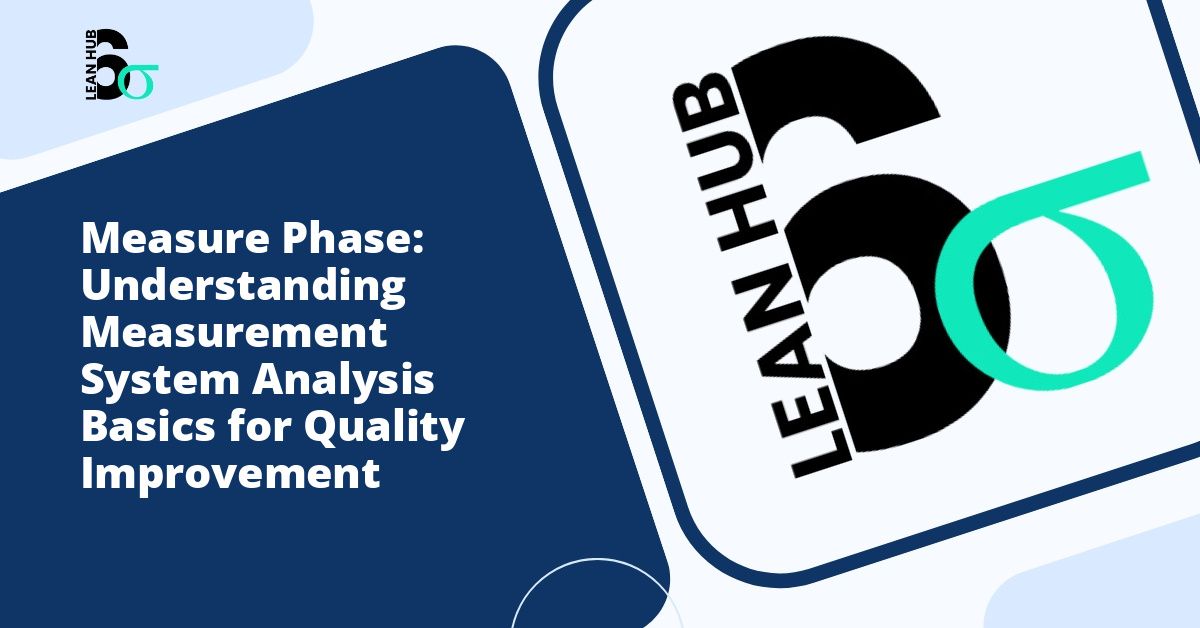In the world of process improvement and quality management, Lean Six Sigma continues to dominate as the methodology of choice for organizations seeking operational excellence. As we navigate through 2025, understanding the Measure phase of the DMAIC (Define, Measure, Analyze, Improve, Control) framework has become more critical than ever for businesses aiming to maintain competitive advantages in increasingly data-driven markets.
Understanding the Measure Phase in Lean Six Sigma
The Measure phase represents the second stage in the lean six sigma methodology and serves as the foundation for all subsequent improvement efforts. After completing the Define phase, where project goals and customer requirements are established, the Measure phase focuses on quantifying the current state of the process and establishing baseline metrics that will guide improvement initiatives.
This phase answers fundamental questions: Where do we stand today? How do we know we have a problem? What is the extent of the issue? Without accurate measurement, improvement efforts become guesswork, making this phase indispensable for any successful Six Sigma project.
Key Objectives of the Measure Phase
The Measure phase encompasses several critical objectives that project teams must accomplish before proceeding to analysis and improvement activities.
Establishing Current Process Performance
The first objective involves documenting how the process currently performs. Teams must collect data that accurately reflects process outcomes, cycle times, defect rates, and other relevant metrics. This baseline becomes the benchmark against which all improvements will be measured.
Validating the Problem Statement
During this phase, teams verify that the problem identified in the Define phase actually exists and is significant enough to warrant attention. Data collection provides evidence supporting or refuting initial assumptions about process performance gaps.
Identifying Critical Metrics
Not all measurements are equally valuable. The Measure phase helps teams identify which metrics truly matter for the project. These critical-to-quality (CTQ) characteristics directly link to customer satisfaction and business objectives.
Essential Tools and Techniques
Successful execution of the Measure phase requires proficiency with various analytical tools and data collection methodologies.
Data Collection Planning
Before gathering any data, teams must develop comprehensive data collection plans. These plans specify what data to collect, how to collect it, who will collect it, and when collection will occur. Proper planning prevents wasted effort and ensures data quality.
A robust data collection plan includes operational definitions for all measurements, sampling strategies, data recording formats, and quality checks to identify errors or inconsistencies early in the process.
Process Mapping and Documentation
Visual representation of processes through detailed flowcharts and value stream maps helps teams understand every step in the current process. This documentation identifies measurement points, potential problem areas, and opportunities for data collection.
Measurement System Analysis (MSA)
One of the most critical activities in the Measure phase involves validating that measurement systems themselves are accurate and reliable. Measurement System Analysis examines the variation introduced by measurement equipment, operators, and environmental factors.
MSA techniques such as Gage R&R (Repeatability and Reproducibility) studies ensure that observed process variation represents actual process performance rather than measurement error. Without reliable measurement systems, all subsequent analysis becomes questionable.
Statistical Process Control (SPC)
Control charts and other SPC tools help teams understand process behavior over time. These tools distinguish between common cause variation (inherent to the process) and special cause variation (resulting from specific, identifiable factors).
Critical Success Factors in the Measure Phase
Several factors determine whether the Measure phase delivers the foundation needed for successful improvement projects.
Data Quality and Integrity
The principle “garbage in, garbage out” applies completely to lean six sigma projects. Data must be accurate, complete, and representative of actual process performance. Teams should implement verification procedures to catch errors before data enters analysis.
Appropriate Sample Sizes
Statistical validity requires adequate sample sizes. Too little data leads to unreliable conclusions, while excessive data collection wastes resources. Teams must calculate appropriate sample sizes based on desired confidence levels and acceptable margins of error.
Stakeholder Engagement
Process owners, operators, and other stakeholders possess invaluable knowledge about how processes actually function. Their involvement during the Measure phase ensures that data collection captures reality rather than theoretical process flows.
Common Pitfalls to Recognize Phase
Even experienced practitioners encounter challenges during the Measure phase. Awareness of common mistakes helps teams avoid costly missteps.
Measuring Everything Instead of What Matters
The availability of data does not make it relevant. Teams sometimes fall into the trap of measuring whatever is easy to measure rather than what is truly important. Focus must remain on metrics that directly relate to project objectives and customer requirements.
Ignoring Operational Definitions
Vague definitions lead to inconsistent data collection. What one person considers a defect, another might view as acceptable. Clear, unambiguous operational definitions ensure everyone measures the same things in the same way.
Rushing Through Measurement System Validation
Pressure to show progress sometimes causes teams to skip or shortcut Measurement System Analysis. This mistake can invalidate entire projects when unreliable measurement systems mask true process performance.
Neglecting to Recognize Phase Transitions
The recognize phase within the broader Measure stage requires teams to acknowledge when they have gathered sufficient baseline data to proceed. Some teams either collect data indefinitely or rush forward prematurely. Learning to recognize phase completion based on statistical confidence rather than arbitrary timelines represents an important skill.
Advanced Considerations for 2025
As technology evolves, the Measure phase incorporates new capabilities while maintaining fundamental principles.
Automated Data Collection
Internet of Things (IoT) sensors, automated monitoring systems, and integrated software platforms now enable continuous, real-time data collection. While this technology offers unprecedented visibility into process performance, teams must still apply rigorous MSA principles to automated systems.
Big Data Analytics
Organizations now have access to massive datasets that were unimaginable just years ago. However, big data does not eliminate the need for careful measurement planning. Teams must extract relevant signals from noise and ensure that data volume does not substitute for data quality.
Artificial Intelligence Integration
Machine learning algorithms can identify patterns and relationships in measurement data that human analysts might miss. However, AI tools complement rather than replace fundamental Six Sigma measurement principles. Human judgment remains essential for interpreting results and making decisions.
Moving Forward from the Measure Phase
Completion of the Measure phase provides teams with validated baseline metrics, reliable measurement systems, and clear understanding of current process performance. This foundation enables confident progression to the Analyze phase, where teams identify root causes of performance gaps.
The investment in thorough measurement pays dividends throughout the remaining DMAIC phases. Projects built on solid measurement foundations have higher success rates, deliver more sustainable improvements, and generate greater return on investment.
Conclusion
The Measure phase of lean six sigma methodology remains as vital in 2025 as when Six Sigma principles first emerged decades ago. While tools and technologies have evolved, the fundamental principle endures: you cannot improve what you cannot measure. Organizations that master measurement phase techniques position themselves to achieve breakthrough improvements in quality, efficiency, and customer satisfaction.
Success requires discipline, attention to detail, and commitment to data integrity. Teams must resist shortcuts, validate their measurement systems, and focus on metrics that truly matter. By following these principles, organizations can confidently build improvement initiatives on foundations of accurate, reliable data that drive meaningful business results.








